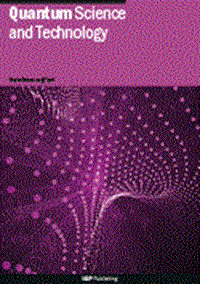A linear photonic swap test circuit for quantum kernel estimation
IF 5.6
2区 物理与天体物理
Q1 PHYSICS, MULTIDISCIPLINARY
引用次数: 0
Abstract
The swap test is a quantum algorithm capable of computing the absolute value of the scalar product of two arbitrary wavefunctions. Scalar products represent a crucial ingredient to many quantum machine learning (QML) methods, but their evaluation is not straightforward at all. For this reason, many research efforts have been made without achieving an efficient and robust implementation. Here, we present an integrated photonic circuit designed to implement the swap test algorithm. Our approach relies solely on linear optical integrated components and qudits, represented by single photons from an attenuated laser beam propagating through a set of waveguides. By utilizing 23 spatial degrees of freedom for the qudits, we can configure all the necessary arrangements to set any two-qubit state and perform the swap test. This simplifies the requirements on the circuitry elements and eliminates the need for non-linearity, heralding, or post-selection to achieve multi-qubit gates. Our photonic swap test circuit successfully encodes two qubits and estimates their scalar product with a measured root mean square error smaller than 0.05. This result paves the way for the development of integrated photonic architectures capable of performing QML tasks with robust devices operating at room temperature.用于量子核估计的线性光子交换测试电路
交换测试是一种量子算法,能够计算两个任意波函数的标量乘积的绝对值。标量积是许多量子机器学习(QML)方法的重要组成部分,但其评估却并不简单。因此,许多研究工作都没有实现高效、稳健的实施。在此,我们提出了一种集成光子电路,旨在实现交换测试算法。我们的方法完全依赖于线性光学集成元件和量子,由通过一组波导传播的衰减激光束中的单光子表示。通过利用量子的 23 个空间自由度,我们可以配置所有必要的安排,以设置任何双量子比特状态并执行交换测试。这简化了对电路元件的要求,无需非线性、预示或后选来实现多量子比特门。我们的光子交换测试电路成功地编码了两个量子比特,并估算了它们的标量乘积,测量的均方根误差小于 0.05。这一成果为开发集成光子架构铺平了道路,该架构能够利用在室温下运行的坚固器件执行 QML 任务。
本文章由计算机程序翻译,如有差异,请以英文原文为准。
求助全文
约1分钟内获得全文
求助全文
来源期刊

Quantum Science and Technology
Materials Science-Materials Science (miscellaneous)
CiteScore
11.20
自引率
3.00%
发文量
133
期刊介绍:
Driven by advances in technology and experimental capability, the last decade has seen the emergence of quantum technology: a new praxis for controlling the quantum world. It is now possible to engineer complex, multi-component systems that merge the once distinct fields of quantum optics and condensed matter physics.
Quantum Science and Technology is a new multidisciplinary, electronic-only journal, devoted to publishing research of the highest quality and impact covering theoretical and experimental advances in the fundamental science and application of all quantum-enabled technologies.
 求助内容:
求助内容: 应助结果提醒方式:
应助结果提醒方式:


